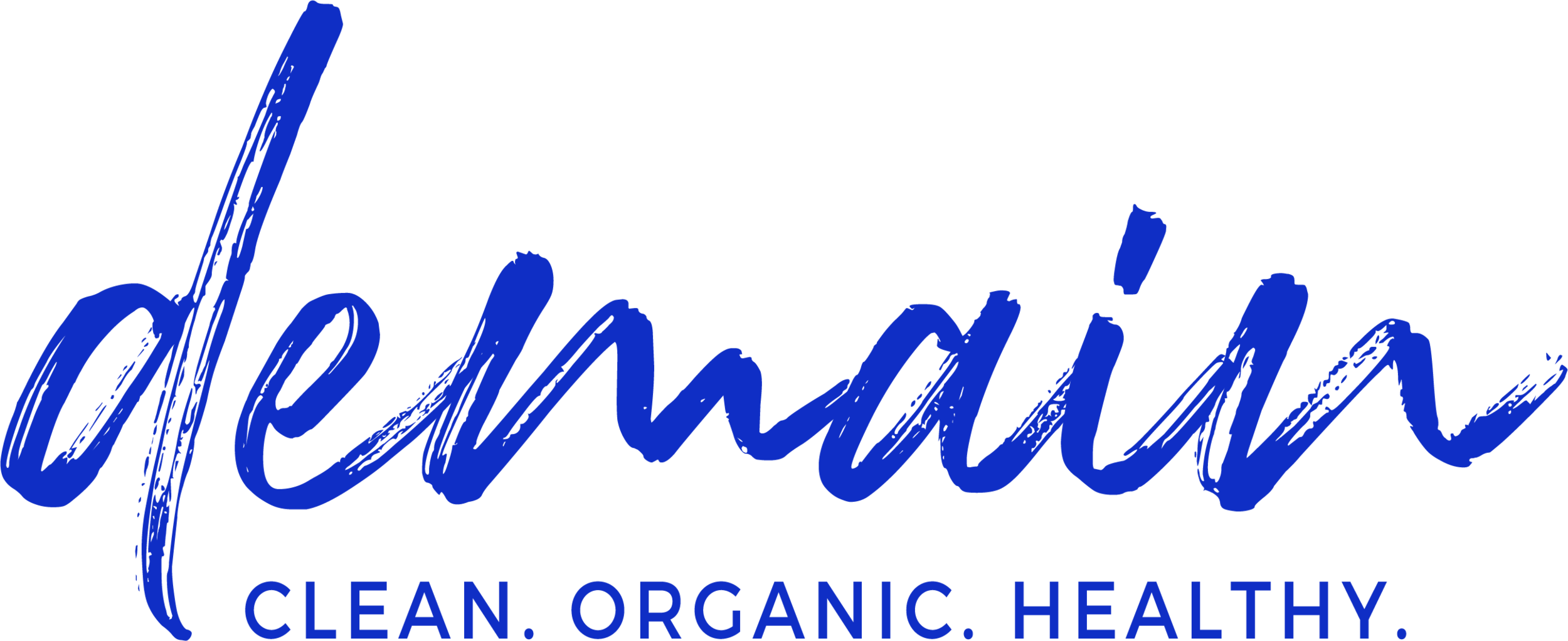Back to school can be a stressful time, but with good planning and anticipation, it can become a serene period. Whether for a project, a territorial organization or family planning, defining clear objectives, ordering tasks and estimating the necessary resources are key steps. Discover how to effectively use planning tools for optimal management of time and resources.
Definition and importance of planning
Planning refers to the systematic organization of tasks and resources to achieve a predefined goal within a specified period of time. It is a crucial management tool that helps visualize the future, determine actions to be taken, and plan how to deal with future situations.
The importance of planning lies in its role as a fundamental pillar in the implementation of strategies and action programs. It facilitates the definition of objectives, the optimization of resource allocation and the improvement of decision-making. Therefore, good planning can lead to more efficient project execution, better coordination and cooperation within a team, as well as greater stakeholder satisfaction.
What is the main purpose of planning?
The planner is a key player in the organization, who holds a strategic position related to the design, implementation and monitoring of action plans. His mission is to ensure that the objectives set are achieved within the time frame and within the allocated budget.
He uses planning tools and analysis methods to establish detailed plans, coordinate resources and monitor the progress of projects. He works closely with different teams, including project managers, staff and management.
- He is responsible for creating the project schedule, defining milestones and key deliverables .
- It estimates the durations and resources required for each task, while identifying and managing dependencies between tasks.
- He monitors the progress of the project and adjusts the plan accordingly.
- It plays a mediating role between different parts of the organization, facilitating communication and coordination.
- He ensures that deliverables are completed on time and that quality standards are met.
The planner is therefore an essential cog in the organization, who actively contributes to its performance and success.
Planning: a strategic tool for businesses
Marketing planning: a crucial step
Within a company, marketing planning is a decisive phase for its success and sustainability. It allows you to orchestrate in a conscious and organized way the marketing actions to be deployed to achieve the defined objectives.
This step begins with an analysis of the company's current situation , assessing its strengths, weaknesses, as well as the opportunities and threats in its environment. This analysis is essential to understand the context in which the company operates and to define an appropriate marketing strategy.
In a second step, the formulation of a strategy and an action plan is developed. These will guide the company in the implementation of its marketing strategy.
Then, the implementation of the marketing plan takes shape through the activation of the selected strategic levers: communication actions, commercial actions, loyalty actions, etc.
Finally, comes the evaluation of the results which allows us to measure the effectiveness of the actions implemented and to adjust the marketing plan if necessary.
This continuous process of planning, implementation, evaluation and learning ensures a dynamic of constant improvement in the company's marketing performance.
Financial planning: anticipation and management of resources
Financial planning is an essential exercise aimed at anticipating and managing a company's financial resources. It contributes to the achievement of its strategic objectives and the optimization of its performance.
For optimal management, it is necessary to:
- Precisely assess the resources available and those to be mobilized,
- Forecast cash flow and estimate expenses,
- Implement optimization strategies to maximize profits and minimize risks,
- Use financial reporting and analysis tools for real-time monitoring.
The role of the Administrative and Financial Director (DAF) is central in this approach. He is in charge of implementing financial planning and ensures optimal use of resources. Poor management can have dramatic consequences for the company.
Industrial planning: production optimization
In the industrial context, planning is essential to optimize production. It allows to synchronize the different stages of production, coordinate the use of resources (human, material, machines) and minimize downtime. Thus, effective industrial planning can increase productivity, reduce costs and improve product quality.
Various tools and techniques can be used for industrial planning, including:
- The Gantt chart , which gives an overview of the production schedule.
- MRP (Material Requirements Planning) , which optimizes inventory management and production flows.
- Scheduling that defines the order of production tasks to maximize efficiency.
Technological advances, including Artificial Intelligence (AI) and optimization algorithms, offer new opportunities to improve industrial planning. They can help anticipate bottlenecks, adjust the schedule in real time based on unforeseen events, and simulate different production scenarios to find the most optimized one.
Territorial planning: sustainable development and planning
Territorial planning is a strategic approach that aims to guide the planning and sustainable development of a territory. This approach encompasses various components such as resource management, urban planning, infrastructure and environmental preservation.
- Its aim is to create a harmonious balance between economic development, social equity and environmental protection.
- It is based on planning documents, such as Regional Planning and Development Plans (SRADDET), which set the objectives and rules to follow.
- The Territorial Planning Directives (DTA) can also be used to define strategic orientations in territories presenting national issues.
However, territorial planning is not limited to these tools. It also involves a long-term vision, the participation of the different actors in the territory and adaptability to future changes and challenges, such as climate change or energy transitions.
Family planning: an often underestimated aspect
The objectives of family planning
Family planning has several goals, which vary depending on the specific needs of each family.
One of the main goals is birth control , allowing couples to decide how many children they want to have and when they want to have them. This contributes to gender equality and women's empowerment.
Another goal is the prevention of high-risk pregnancies , which can improve the health of the mother and children.
Family planning can also allow families to have more financial resources and time for each child.
Finally, family planning plays an important role in achieving the Sustainable Development Goals, particularly in terms of sexual and reproductive health and rights.
Tools and tips for good family planning
For successful family planning , several tools and strategies can be implemented.
- Using a family calendar can be useful for organizing everyone's activities and visualizing all the tasks to be completed.
- Counseling tools can help couples talk and make joint decisions about family size.
- When it comes to contraception, there are a multitude of methods. The choice of one or another will depend on factors such as general health, age, frequency of sexual intercourse, number of sexual partners, desire to have children in the future and family history of certain diseases.
- Finally, let's not forget that communication is a key element of any family planning. Discussing each other's expectations and needs openly and honestly can avoid many misunderstandings and conflicts.
These tools and tips are not exhaustive, but they can provide a solid foundation for good family planning.
Time Management and Organization with Family Planning
Time management and organization are two key elements of family planning. The goal is to optimize daily life so that each member of the family can accomplish their tasks and activities efficiently. To achieve this goal, several tools and methods can be used.
- The family calendar : it allows you to view everyone's activities and organize your time accordingly. It can be in paper or digital format.
- Family organization apps : These offer features that make it easier to coordinate tasks, share information, and communicate among family members.
- Delegation of tasks : This involves distributing tasks fairly between family members, according to their abilities and availability. This helps reduce the mental load and involves everyone in organizing daily life.
The adoption of these tools and methods requires effective communication and a common desire to improve family organization.
Planning software: valuable allies
Choosing the Right Scheduling Software
Adopting the right scheduling software can have a significant impact on the efficiency of your organization. There are several criteria to consider when choosing this type of software.
Analyze your specific needs : Some software is better suited for planning complex projects, while others are better suited for managing day-to-day tasks. Clearly identify your expectations before you start your search.
Review the features offered : Scheduling software offers a multitude of features. Make sure the software you choose offers the ones that are relevant to your organization.
Consider compatibility with other tools : Good scheduling software should be able to easily integrate with other tools you use frequently.
Consider your resources : Your budget and team size can also influence your choice. There are free or low-cost options that may be a great fit for small teams or solo entrepreneurs.
Evaluate the usability of the software : Easy-to-use software will save your team time and increase productivity.
Remember that software like monday.com, Trello or Asana are references in the field of planning.
Must-Have Features of Scheduling Software
Scheduling software offers a range of features to efficiently assist users in their tasks. Here are some of the key features you should look for:
- Task Management : Allows you to create tasks, assign them to team members, and set due dates.
- Integrated calendar : provides an overview of planned activities.
- Real-time collaboration : facilitates communication and teamwork.
Additionally, other features may be useful, depending on the nature of your work:
- Automated scheduling : for recurring tasks or based on specific triggers.
- Resource management : to track the use of material or human resources.
- Time tracking : to record the time spent on each task.
The key is to choose software that best meets your needs and improves your efficiency.
How to optimize the use of planning software?
To optimize the use of planning software, knowledge of the features offered is essential. It is recommended to familiarize yourself with the different options, such as task planning , resource management , or project visualization . Exploiting these options allows for more efficient use of the software.
- Be sure to configure the software according to your specific needs.
- Use project templates if available, they can be used as a starting point and modified according to project requirements.
- Remember to update the software regularly to benefit from the latest improvements.
Focusing on continuous training of the team is also a key point. Users must be able to use the tool effectively to get the most out of it. Regular training sessions, tutorials or user guides can be very useful.
Finally, optimizing the use of planning software also involves integration with other tools already used within your organization. This integration allows for better collaboration and synchronization of information.
Planning in health care
Care planning: a necessity in the medical sector
Care planning is an essential process that allows healthcare professionals to effectively organize the care to be provided to their patients. This includes defining the necessary care, choosing the appropriate professionals to carry it out ( RN , AS , dietician , physiotherapist , medical interventions, etc.), and establishing a schedule for their implementation.
Care planning helps ensure that patients receive the care they need, when they need it, and in the most efficient way possible. It plays a crucial role in optimizing the use of resources, ensuring quality of care, and improving patient satisfaction.
- Care planning is flexible and can be adjusted based on changing patient needs and caregiver abilities.
- It is multidimensional and requires close collaboration between different health professionals.
- The use of technologies, such as digital health databases or electronic medical records, can greatly facilitate care planning.
Care planning is therefore a valuable tool for improving the effectiveness and efficiency of the medical sector.
Tools and methods for good care planning
In the field of health care, various tools and methods promote effective planning. One of them is the Regional Health Project (PRS) , a strategic planning tool that includes a plan, a scheme and a program. For successful implementation, regional schemes are developed for prevention, care organization and medico-social organization.
- Traceability tools, such as the nursing care record , are also important. They make it possible to monitor the care administered and anticipate future care.
- Care planning tools, such as daily planning , are essential for organizing the care to be provided.
- Using scheduling software can also be beneficial. It provides an overview of the tasks to be completed, making it easier to manage time and resources.
In terms of methods, the quality approach has proven itself. It is based on the use of specific methods and tools, such as risk analysis, to guarantee the quality of care.
Role of the Planning Officer in the Health Care Sector
The health planning officer plays a crucial role in ensuring the coordination of patient care. He is responsible for the chronological organization of care, taking into account medical prescriptions and the skills of each health professional involved.
It is involved in the forward planning of care, which involves anticipating needs in terms of human and material resources. This requires the ability to assess the growing demands of patients without excessively increasing the workload of care teams.
The planning officer must also ensure the traceability of care, a task which can be facilitated by the use of specific tools such as the nursing care record.
Finally, this professional plays a liaison role between the different healthcare stakeholders, thus promoting optimal patient care.
What are the three types of planning?
In the broad field of planning, three types deserve special attention for their frequent use and significant impact.
- Strategic planning : It aims to define the long-term direction of an organization or project. It involves identifying objectives, defining strategies to achieve them and aligning resources for their achievement.
- Operational planning : More detailed and short-term, it concerns the implementation of strategic plans. It focuses on organizing daily activities, managing resources and achieving short-term objectives.
- Project planning : Specific to each project, it involves determining the tasks to be carried out, estimating the resources required and defining the execution schedule.
Understanding these three types of planning allows for better management and control of activities, whether managing a business, a project or even a family.
The salary of a planning officer: how much do they earn?
The salary of a planning officer varies depending on their level of experience, the size of the company and the sector of activity. On average, a planning officer can earn between 2000 and 2500 euros net per month, or an annual gross salary of between 24,000 and 30,000 euros. However, some salaries can reach up to 4000 euros monthly depending on the level of expertise and the complexity of the tasks.
Entry-level planning managers can expect an annual salary of around €23,400, while more experienced workers can earn up to €37,000 per year. In terms of additional compensation, it can range from €1,625 to €8,200.
It should be noted that these figures are averages and that the salary can vary depending on many factors such as geographical location, level of responsibility, training or even specialization.
Planning: synonyms and related terminologies
Some synonyms of the term "planning"
To enrich our vocabulary and make it easier to understand the concept of planning, let's discover some synonyms for the term "planning".
Programming , for example, also refers to the idea of organizing actions over time. Similarly, organization involves structuring tasks and resources to achieve a goal.
Furthermore, the term preparation is related to planning in the sense that it evokes the anticipation necessary to carry out future actions.
Other terms such as:
- Development
- Timeline
- Statism
- Planning
- Order
are also used as synonyms for planning. These terms each bring a specific nuance, thus enriching our understanding of the concept of planning.
Other planning related terms
In the field of planning, several other terms are often used. These bring a certain precision or nuance to the notion of planning.
- Project planning : this concerns the management of the different stages of a project, from its design to its completion.
- Strategic planning : This term refers to defining an organization's long-term goals and the method for achieving them.
- Operational planning : It refers to the organization of daily activities and the achievement of short-term objectives.
- Economic planning : This concept is used in the field of economics to describe the organization of production and distribution of resources.
- Imperative planning : A term used to describe planning imposed by a central authority without regard to individual preferences.
- Incentive planning : Unlike imperative planning, it takes into account individual preferences and seeks to guide behavior through incentives.
These terms, and others, enrich the understanding of planning and allow us to better grasp the different facets of this concept.











